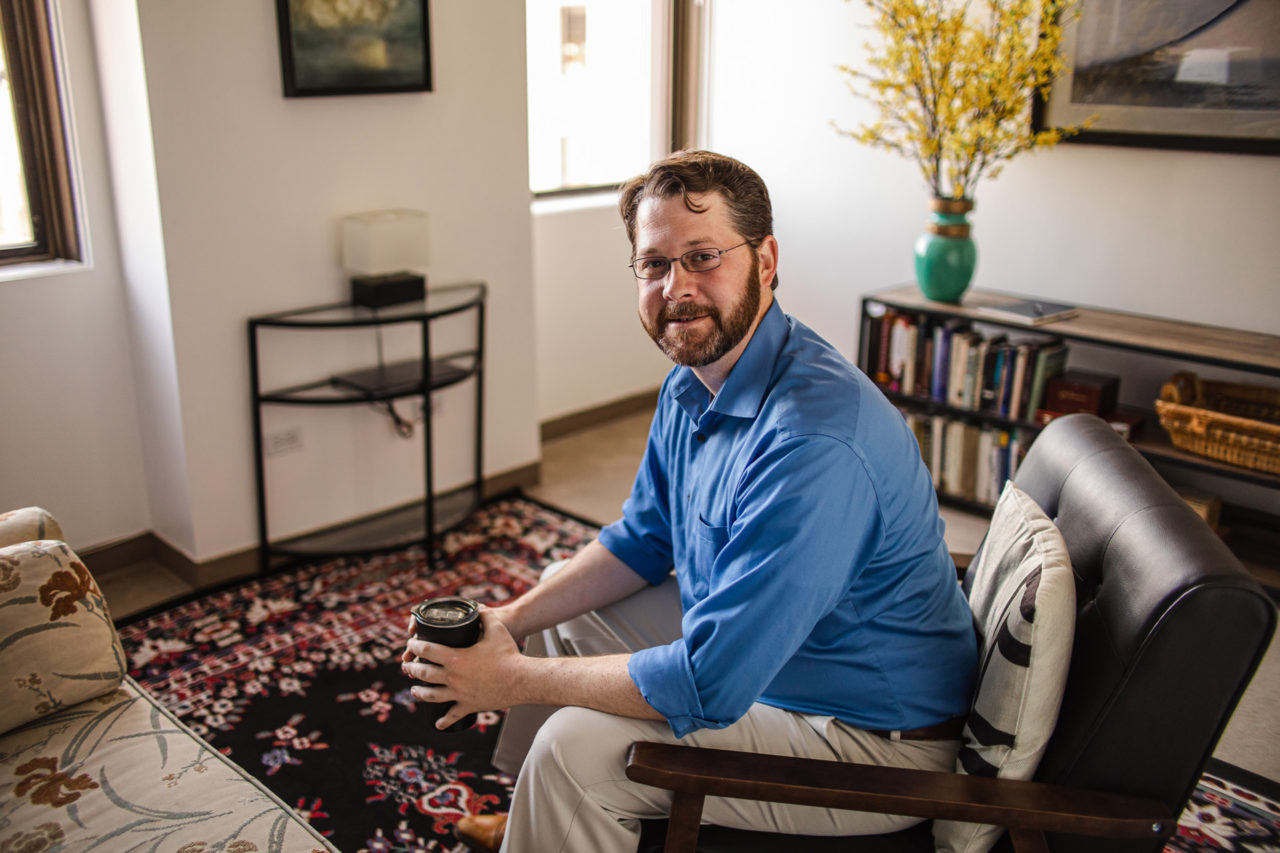Take me to “A Catholic’s Guide to Self-Help”
by Daniel Johnson, M.A., Associate M.F.T.
Have you ever had a thought and wondered, “Where did that come from?” or feel something and say to yourself, “What’s all that about?” Many Catholics who struggle with scrupulosity will quickly conclude that they are guilty of sin because of the content of their thoughts. Those who struggle with anger or lust often find themselves overcome by their emotions without ever pausing to think about the actions that follow upon that emotion.
Separating the Origin of Thought from Our Response
John Cassian was a monk of the ancient church who compiled many of the sayings and insights of the many monks who populated the dessert at that time. His famous book the Conferences has this to say about our thoughts, “It is impossible for the mind to remain undisturbed by thoughts, but anyone serious about the matter can certainly permit them entry or drive them away, and although their origin does not lie entirely under our control we can choose to approve of them and to adopt them.” We can only speculate about what formal method he used to teach the monks about permitting entry or driving away their thoughts. In our own day, thought labeling is one good method for doing precisely this.
Thought labeling is a popular mindfulness technique which helps us to slowdown and perceive our experiences – be they thoughts, feelings, or sensations – one at a time. It allows us to build a space, as it were, between our experiences and our responses. This space allows us to be angry but have the time to decide what to do with that anger. It allows us to be triggered by sensual thoughts but to have the time to remove ourselves from any temptation. One version of thought labeling helps us to categorize and organize our thoughts so that we can better judge their importance towards action.
Practice Thought Labeling
How do we do label our thoughts? There are two ways, but each benefits from being in a quite space, closing our eyes, and becoming aware of our breathing including taking a few deep breaths help to get us started.
Once we are disposed to attend only to our thoughts, feelings, and sensations, then we simply label them. Here are some examples:
I am thinking about my breakfast this morning. – breath in, breath out
I am thinking about the person I had breakfast with. – breath in, breath out
I am feeling annoyed. – breath in, breath out
I notice that I am feeling a tightness in my chest. – breath in, breath out
Labeling is the simple statement that answers the question, “What am I aware of right now?” It is not an explanation of what I am aware of, nor is a judgment of goodness or badness, but merely a statement of what is. Explanations and judgments can come later, right now we are slowing down long enough to be aware of what is going on. A popular image used to describe this exercise is to compare our thoughts to leaves floating on a river. They come into view and float on past us, without much mental work on our part beyond the recognition that it is a leaf.
Another way to practice thought labeling is to name the type of thought, rather than the specific thought. Instead of I am thinking about breakfast we would say something like I am having a memory. Instead of the person I had breakfast with we would say something like I am having a judgment about so-and-so. We have all sorts of internal experiences like these. Not just feelings like anger, sorrow, and joy but also judgments, imaginations, memory, arguments and many more.
Building a habit takes time, correcting old habits takes even more time. Practicing thought labeling for five minutes a day is a great way to get started. Slowly increasing the amount of time only strengthens this habit. If practiced in this way we build a habit that we can draw on in times when we are overcome by emotion or our thoughts are overwhelming.
Daniel Johnson, M.A., Associate M.F.T.
 Daniel received six years of formation at St. Michael’s Abbey in Orange County. He extensively studied Thomistic theology and philosophy, and other branches of the Catholic intellectual and spiritual tradition. For about five years after leaving the abbey, he taught Modern History, Sacred Scripture, and other subjects at the abbey’s affiliated high school, and later at St. Monica’s Academy in Pasadena. Owing to his years of formation in the abbey and in teaching at Catholic schools, he brings to his counseling and therapy work a deep understanding of the Catholic view of human nature and our ultimate end. Contact Daniel Johnson.
Daniel received six years of formation at St. Michael’s Abbey in Orange County. He extensively studied Thomistic theology and philosophy, and other branches of the Catholic intellectual and spiritual tradition. For about five years after leaving the abbey, he taught Modern History, Sacred Scripture, and other subjects at the abbey’s affiliated high school, and later at St. Monica’s Academy in Pasadena. Owing to his years of formation in the abbey and in teaching at Catholic schools, he brings to his counseling and therapy work a deep understanding of the Catholic view of human nature and our ultimate end. Contact Daniel Johnson.
